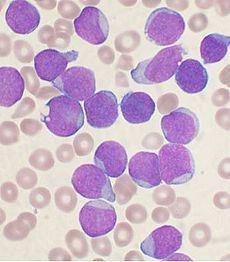Q: I have been browsing through FORENSICS AND FICTION but do not see the perfect solution for my story. In my WIP, set in 1955 St. Louis, a 10 year old girl has a medical problem which is difficult to diagnose. She has been living on the streets but is rescued by an older woman who takes her for medical help. Once the doctor determines the problem, he recommends treatment. Trouble is, the only place for treatment is California, so they must take a road trip. (I want it to be CA because I want them to travel on Route 66)
At first, I considered exposure to sewer gas as a good diagnosis. But once she got out of the sewers she would get well. That won’t do. I’m thinking it must be an autoimmune disease or a parasitic or unusual infectious disease. Can you think of a fatal disease in those categories which would have had cutting edge treatment being done experimentally in CA in the 50s?
Catherine Leggitt, Author, Inspirational Speaker
A: As you pointed out, sewer gas wouldn’t work since once your young lady was free of the environment its effects quickly reverse. I would suggest leukemia. In 1955, acute leukemia in a child that age was common, there was no treatment, and most sufferers died. The mortality remained around 90% for many types of leukemia until well into the 1970s. It could be months or many years between first becoming ill and dying, but death was almost inevitable in 1950s. The timeline would depend on how aggressive the particular leukemia was and how well your child handled it. But medicine could do very little.
In leukemia, white blood cells (WBCs) are overproduced by the bone marrow. These cells are abnormal in that they don’t fight diseases as do normal WBCs. This would leave the child susceptible to infections such as pneumonia, urinary tract infections, even the flu. Each bout of any of these could be weathered with antibiotics—penicillin and sulfa drugs were around in 1955—or she could die from any of these diseases.

Leukemia Cells are seen here as large and purple; the smaller pale red ones are RBCs
As the WBCs increase in the bone marrow they literally “squeeze out” the marrow cells that make red blood cells (RBCs) and platelets. Low RBCs we call anemia and here she would be fatigued, short of breath with activity, and her physical abilities would be limited by these factors. She might appear pale and take on the look of someone who is chronically fatigued, which she would be. Platelets are involved in blood clotting so with low platelets she would bleed easily, with even the most minor trauma. She could easily have episodic nose bleeds and would bruise very easily.
Most leukemia victims suffered all three of these derangements–high but abnormal WBCs, low RBCs, and low platelets–so your girl could have any of the above symptoms, in any combination, and in any degree of severity.
Since there were no effective treatments in 1955, patients and parents sought all kinds of treatments. Herbs, electrical current, tonics of all types (most of which were alcohol based), faith healers, and almost anything you can think of. Your young girl could easily be referred to someone “out in California” by her local St. Louis doctor.
This should give you a lot to work with for your story.
Google Leukemia and you will find many sources but remember that things are much different now than in 1955. Here are a couple of links to get started:
http://serc.carleton.edu/woburn/overarching/leuk_treatment.html
http://www.nature.com/leu/journal/v15/n4/full/2402065a.html
